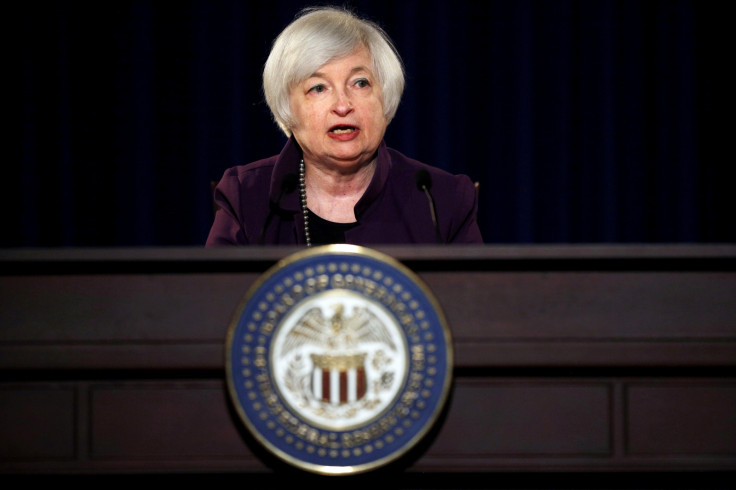Five things to look out for as Federal Reserve prepares to hike rates
Fed set to raise rates as US markets and dollar have hit record-highs following Donald Trump's victory.

The US Federal Reserve is widely expected to raise interest rates at its final meeting of the year on Wednesday night (14 December).
The eyes of investors will be firmly on Janet Yellen, as the Fed chairwoman delivers the bank's latest statement on the US economy and outlines the Fed's plans for the next 12 months, only a few weeks before President-elect Donald Trump takes office at the White House.
Here is five things to look out for on Wednesday.
1) How likely is the Fed to raise interest rates?
The market is putting a 100% chance on a 0.25% rate hike from the Fed to 0.75%, which would be the first increase of 2016 and the second of this rate hike cycle after last December's 0.25% move. With a rate hike all but certain, analysts have suggested the tone of Yellen's press conference and her forecast for future rate increases, the so-called 'dot plot', could prove much more significant.
"The 'dot plot' and Fed forecasts for rate hikes in 2017 might be of greater interest [as] last December [the Fed] forecast four rate hikes and delivered one," said Russ Mould, investment director at AJ Bell.
"The market is currently pricing in one or two 0.25% increases in 2017, the first in June or July."
2) What will Yellen say?
When the Fed raised interest rates last year, it was the first time it had done so since 2006 but it then delivered only one of the four hikes it promised, amid jitters over a slowdown in China and the Brexit vote and the uncertainty surrounding the result of the US election.
In the immediate aftermath of Donald Trump's win, the prospect of the Fed going ahead with its planned rate hike this month looked far-fetched but the US economy has since improved markedly, meaning Yellen is expected to deliver an upbeat message.
"While a rate hike is almost entirely priced in, the Fed's expectations for the year ahead will be key, with markets currently remaining quite cautious on further increases next year," said Oanda's senior analyst Craig Erlam.
3) What will a rate hike mean for the US economy?
Economic recovery in the US appears to be back on track. Unemployment hit a nine-year low earlier this month, while recent reports showed business confidence remains high and growth is strengthening.
Donald Trump's surprise victory in the US elections and his promises of significant fiscal stimulus next year could deliver a further boost to economic growth, leaving Fed officials little room to adopt a dovish stance.
"Fiscal stimulus next year in an economy that is already at full employment makes a cautious Fed stance less necessary and could risk leaving it too much behind the curve," said economists at Bank of America Merrill Lynch.
4) Will the rate hike affect the stock market?
Following Donald Trump's victory, the US stock market has enjoyed a remarkable run, which has brought the Dow Jones tantalisingly close to the 20,000 mark. The index hit an all-time closing high of 19,614.81 on Thursday (8 December), while the S&P 500 has gained more than $900bn in market value since the US elections.
"In the past, the market would be wobbling at the prospect of a Fed rate hiking cycle, but in this environment, stocks are acting like they did 10-15 years ago," said Kathleen Brooks, research director at City Index.
"These are interesting times, if the US stock market rally can sustain a hawkish turn from Janet Yellen on Wednesday then irrational exuberance is likely to last well into the New Year."
5) And what about the dollar?
Traditionally, the greenback is among the beneficiaries of a Fed rate hike and this times promises to be no different. The US currency hit the highest since February against the yen earlier this week and looks on course to hit parity against the euro during the second half of next year, if not sooner.
At the moment, the market does not expect another rate hike until June but should the Fed defies those expectations, then the dollar could strengthen even further.
With the European Central Bank easing in monetary terms and the Fed now tightening, the natural set-up for this is a lower EUR/USD," said Jordan Hiscott, trader at Ayondo Markets.
"I find it hard to believe we won't be challenging parity by the second quarter next year."
© Copyright IBTimes 2025. All rights reserved.




















